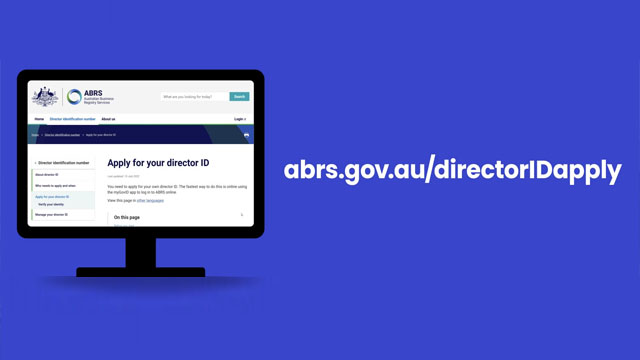Category: Newsletters
Variable Interest Rate at 6.34% NOW

Lenders are offering investment loans with a 6.34% variable interest rate.
Reach out to us NOW and learn more about how we can help you by calling us on (02) 8383 4466 and requesting a callback or making an appointment with the YML Finance Team.
How can YML help?
Talk to our YML Finance Team today to see how YML Group can assist you with your investment loan. For more for more information, view our website and contact us on (02) 8383 4466 or by using our Contact Us page on our website.
Bring Forward Rule to top up your Superannuation

Receiving superannuation contributions from an employer and making personal concessional (before-tax) contributions to your superannuation fund can be just the start of building a healthy retirement sum. You can further increase your superannuation balance by making non-concessional (after-tax) contributions.
How does this work?
Since 1 July 2021 non-concessional (after-tax) contributions – up to a cap of $110,000 per year over a three-year period – may be made in to your superannuation fund.
The Australian Taxation Office (ATO) caps non-concessional contributions based on your total superannuation balance on 30 June of the previous financial year. This table shows how the Bring Forward rule is applied:
|
Total Superannuation Balance 30 June Prior Year |
Bring Forward Years / Total Contribution |
|
Less than $1.68 million |
3 Years / $330,000 |
|
$1.68 million up to < $1.79 million |
2 Years / $220,000 |
|
$1.79 million up to < $1.9 million |
1 Year / $110,000 (Bring Forward not available) |
|
$1.9 million and over |
NIL |
If you receive an inheritance or proceeds from a property sale, for example, these could be used to top up your superannuation balance using the Bring Forward rule. The Bring Forward rule allows you to bring forward the caps of the later year or years to make a larger contribution in one year, up to a total cap of $330,000 over three consecutive years.
This means that if you choose to contribute, say, $200,000 in the first year using the Bring Forward rule, then you would be entitled to contribute up to an additional $130,000 over the subsequent two consecutive years to reach a total cap of $330,000, based on your initial total superannuation balance – across all of your superannuation accounts, not only your Self-Managed Superannuation Fund (SMSF) – of less than $1.68 million.
When your total superannuation balance is close to $1.9 million, you may only contribute non-concessional amounts up to $1.9 million – not beyond – or use the Bring Forward rule to do so.
What to do next
If you are considering making non-concessional contributions this year, and therefore also take advantage of the Bring Forward rule, then it is strongly recommended that you track your superannuation accounts and calculate your total balance on 30 June last year. This will help you to determine whether you qualify for the Bring Forward option.
If you are considering adding to your superannuation fund for a potentially better retirement lifestyle, we at YML Group can help you by checking your eligibility to make non-concessional contributions to your SMSF. We will also help you to track any previous years’ contributions so you can use the Bring Forward rule appropriately and beneficially towards making your future all that you want it to be.
How can YML help?
Talk to our YML Super Solutions Team today to see how YML Group can assist you with the Bring Forward rule. For more information, view our website and contact us on (02) 8383 4444 or by using our Contact Us page on our website.
Pros and Cons of purchasing and owning a Commercial Property in a Company or a Trust or a SMSF

Purchasing a commercial property in Australia can be done through various business entity types, including a company, a trust, and a self-managed superannuation fund (SMSF). Each comes with its own set of advantages and disadvantages. Which one would you choose? Your choice should depend on your specific financial goals and long-term plans, taxation considerations, and your level of risk tolerance.
A commercial property investment offers you a rental income opportunity and potential profit upon a future sale of your property. The tax paid on a commercial property investment will depend on the type of business structure you have used to purchase the property.
Tables outlining some of the pros and cons of each business entity type:
Individual
| PROs | CONs |
| No setup cost | No flexibility to distribute rental profit and capital gain. |
| Land Tax Threshold is available | No asset protection |
| Can use negative gearing to offset other personal income | |
| Negative gearing losses may be absorbed by the company and may be carried forward for their relevant property | |
| Potentially landholder duty exemption when transferring property into the SMSF |
Company
| PROs | CONs |
| Shareholder liability is limited to their investment in the company, providing personal asset protection | Company insolvency or litigation against the company could put the property at risk |
| Rental income is taxed at the lower company rate of 30% | There is a setup cost for the company |
| Capital gains are paid at a lower tax rate and a small business may be eligible for CGT concessions | Reporting and compliance of a company can be complex, costly, and time-consuming |
| Negative gearing losses may be absorbed by the company and may be carried forward for their relevant property | Negative gearing losses may not be used to offset any other entity’s income |
| Tax-deductible expenses may be claimed for the property | 50% general CGT discount is not available |
| Land Tax threshold is available for company | Transfer duty is payable when restricting property from trust to SMSF |
Trust
| PROs | CONs |
| Trusts can distribute rental income to beneficiaries, potentially reducing the overall tax liability through tax planning | Limited control by the trustee/s, where giving beneficiaries a say in the property decisions might lead to conflict |
| Assets held in a trust are afforded a level of protection (discretionary trust) from any creditors of beneficiaries | Trusts are required to be set up and then require ongoing administrative and compliance management |
| CGT concessions may be accessed for the property (held for at least 12 months) if they will be distributed to beneficiaries | Land tax threshold is not available |
| Tax-deductible expenses may be claimed for the property | Potential land tax surcharge and duty surcharge might apply if the trust Deed allows distribution to foreign person |
| Transfer duty is payable when restricting property from trust to SMSF |
SMSF
| PROs | CONs |
| Low tax rates on capital gains (10%) and on rental income (15%) where the property is held for at least 12 months, reducing to 0% tax rate on rental income in pension phase | Illiquidity of SMSF assets restricts access of funds until retirement age |
| CGT exemption applies in the pension phase | Limited diversification if only investing in a single commercial property |
| SMSF members have control and may elect to invest in commercial property | Strict regulations and compliance requirements and severe penalties for breaches |
| Commercial property offers potential value appreciation, increasing SMSF growth | Ongoing management, accounting and auditing costs can be high after what can be a lengthy set up |
| Property can be purchased using SMSF contributions with potential tax concessions |
|
| Tax-deductible expenses may be claimed for the property |
|
YML Group specialises in property investment and taxation and can help you make an informed decision with your financial objectives in mind. Consult us about a suitable business entity to make your first, or next, commercial property purchase.
How can YML help?
Talk to our YML Chartered Accountants Team today to see how YML Group can assist you with your commercial property. For more information, view our website and contact us on (02) 8383 4400 or by using our Contact Us page on our website.
Who is a Related Party in your SMSF and why should you know?

The Superannuation Industry (Supervision) Act 1993 makes provision for inherent conflict of interest that exists in most SMSFs due to trustees being members and vice versa. Financial dealings and transactions intended to help a fund grow can be limited by conflicts of interest, so it is important to identify all related parties in a SMSF.
Related party status is often unclear and where there is confusion, there is a risk of conflict of interest which can arise when a trustee or a related party receives some form of personal benefit that might conflict with the best interests of the SMSF.
Who is a related party?
Identifying a related party is not always straightforward, however SMSF fund members are obvious related parties. Less obvious are associates of a SMSF fund member and the following may be considered a related party:
- A family relative of a member – spouse or partner, grandparent, parent, brother, sister, uncle, aunt, nephew, niece, linear child or adopted child or grandchild of a member or member’s spouse (cousins are exempt)
- An employer of a member – a member’s employer who contributes to a SMSF for the benefit of the member, known as an employer-sponsor, they are often noted in a trust deed
- Business associates of a member – a company, an investment or any business in which a member or a member’s relative has a significant influence, or of which a member or a member’s relative has control
A company will be deemed to be controlled by a member where a company’s directors are obligated or accustomed to act under the instructions of the member and their associates, or if they have more than 50 per cent of voting rights.
- Any other associates of a SMSF – an individual or any entity that has a close relationship with a SMSF or is sufficiently influenced by its members, either individually or grouped
- Other trust funds – trustees of any trust controlled by a member
A member will be deemed to control a trust where a member and their associates have:
- a fixed entitlement of more than 50 per cent of the capital of a trust
- a fixed entitlement of more than 50 per cent of the income of a trust, and are:
- able or accustomed, either formally or informally, to direct a trust’s trustees to act in accordance with the member’s directions, or
- able to appoint or remove trustees from a trust
Precautions and Considerations
All SMSF transactions must be conducted on an arm’s length basis, meaning that the terms and conditions of a transaction should be the same as if parties were not related.
Certain transactions are prohibited between a SMSF and a related party, such as acquiring assets, lending money, and providing financial assistance.
Penalties – fines or disqualification of trustees – are given for non-compliance with the SIS Act 1993, so trustees must ensure that they remain abreast of Australian Taxation Office (ATO) regulatory requirements.
If you’re a trustee, YML Super Solutions is here to help you clear up any confusion about your SMSF’s related parties. We can also help you keep informed of the ATO’s SMSF rules and regulations, so you can manage your fund in the best interest of its members.
How can YML help?
Talk to our YML Super Solutions Team today to see how YML Group can assist you with your SMSF. For more information, view our website and contact us on (02) 8383 4444 or by using our Contact Us page on our website.
Is Co-Sourcing the Solution to help your Business thrive?

Australian businesses face a rapidly evolving global economy. Fortunately, they are at the forefront of adopting businesses practices that can and do optimise their business operations. Co-sourcing is one such strategic approach to strengthen your company’s competitiveness, reduce costs, access specialised expertise, and adapt to changing market dynamics.
Co-sourcing is collaborative, combining existing in-house resources with an external service provider to manage certain functions or processes, proving beneficial by ensuring an agile response to challenges your business confronts in its day-to-day undertaking.
Co-sourcing vs Outsourcing
Unlike traditional outsourcing, where an external service provider entirely takes over specific tasks or functions, co-sourcing is a cooperative or mutual partnership. It enables companies to maintain control and oversight over critical aspects of their businesses whilst leveraging external resources, guidance and skills that might be lacking. Typically, co-sourcing is helpful when you do not want an additional employee within your staff structure.
Co-sourcing is a hybrid model – blending a company’s established internal resources with partial outsourcing for greater specialised knowhow – and the co-sourcing partner assumes shared responsibility for business function outcomes.
In Australia, co-sourcing has gained prominence across various sectors, including finance, healthcare, manufacturing, retail, and technology as it offers flexibility, efficiencies, and access to a wealth of specialist knowledge and skillsets, specifically trained to work alongside Australian companies.
In the context of Australia’s business economy, co-sourcing is particularly relevant:
-
Co-sourcing partners have a deep understanding of Australia’s complex regulatory environment, helping businesses navigate legal and compliance challenges.
-
Co-sourcing can help businesses harness the latest technological advancements without the burden of large-scale technology investment.
-
Co-sourcing enables companies to stay competitive by accessing global talent and resources, helping Australian businesses to compete both domestically and internationally.
With careful planning and management to be successful, co-sourcing is a valuable opportunity for companies who thrive on performance metrics to ensure that co-sourcing meets its business objectives for the long-term. Now, take your business further by meeting co-sourcing head-on with YML.
YML Group provides co-sourcing services in administration disciplines, dedicated and trained professionals who partner with businesses and who use cloud-based technology to work seamlessly with Australian businesses’ management and staff.
How can YML help?
Talk to our YML Business Services Team today to see how YML Group can assist you with our co-sourcing service. For more information, view our website and contact us on (02) 8383 4455 or by using our Contact Us page on our website.
How to remove a Property Caveat in NSW

A property caveat is usually lodged when someone has a legal interest or right to a property but does not have full ownership of the property. A caveat – a legal notice registered with the NSW Land Registry Services by an individual or an entity to protect their claim on a property – serves to inform anyone dealing with a property that there is a third-party interest associated with it.
Property caveats affect the ability to sell or transfer property and alert potential buyers and refinance lenders to a legal issue. This alert can make potential buyers and or lenders hesitant to proceed with a transaction.
A caveator must have sufficient connection to the property. That is, the party lodging the caveat needs to show they have a legal or equitable interest in the property on which they want a caveat. This is known as a caveatable interest and can arise under a range of circumstances such as through a contract to purchase a property, a security or a beneficiary’s interest under a trust.
Broadly, there are three main ways to remove a caveat:
- Through mutual agreement with the caveator,
- Through an application to lapse the caveat which goes undisputed, or
- Through a formal court application challenging the caveat order and the provision of evidence that an interest or claim no longer exists and thus a caveat is no longer necessary.
Generally, except where the caveator has agreed to remove their caveat, specialised legal counsel may be required, together with the relevant supporting evidence.
How can YML help?
Talk to YML Legal today to see how YML Group can assist you with removal of a property caveat. For more information, view our website and contact us on (02) 8383 4499 or by using our Contact Us page on our website.
What are your SMSF Tax-deductible Expenses?

Self-managed superannuation funds (SMSFs) are subject to clearly defined rules and regulations regarding tax-deductible expenses. While these rules are designed to ensure that SMSFs are operated for the sole purpose of providing retirement benefits to their members, SMSFs may claim tax deductions for certain expenses.
Generally, not all SMSF expenditure is tax-deductible and some capital expenses – cost of purchasing fund assets, for example – are tax-liable. Neither the cost of establishing a SMSF nor drawing up its trust deed may be claimed as tax deductions.
To be tax-deductible, expenses must be assumed in the endeavour of earning income for your SMSF, consistent with your SMSF’s investment strategy and permitted under its trust deed.
Here are some common expenses that you could claim as tax deductions for your SMSF, subject to Australian Taxation Office (ATO) approval:
-
Trustee expenses incurred for such events as trustee training, trustee meetings and SMSF-relevant seminars.
-
Administration fees for general operation of your SMSF, including collecting and processing member contributions.
-
Investment management fees such as those paid to financial advisers, investment managers, lenders, and stockbrokers for managing your SMSF’s investments.
-
Insurance premiums related directly to insuring your SMSF’s investments, and policy premiums paid on behalf of SMSF members for life or income protection insurance.
-
Accounting and auditing fees incurred for the preparation of your SMSF’s financial statements, annual returns, and audits.
-
Legal costs paid to legal counsel and legal representation related to the operation and compliance of your SMSF.
-
Bank fees and charges associated with your SMSF’s bank accounts.
-
Property management fees, if your SMSF owns property.
-
Rental property costs on SMSF-owned rental property.
-
Property repair and maintenance costs incurred on SMSF-owned property.
-
Interest on loans used to purchase SMSF-owned property.
-
Depreciation costs on investment assets, such as commercial property plant and equipment.
-
Compliance costs such as ATO lodgement fees and statutory fees and levies.
SMSF trustees are responsible for keeping accurate records of all expenses and checking that those expenses meet the strict eligibility criteria for tax deductions, as it is crucial to comply with Australia’s taxation rules and regulations.
The process for claiming expenses and deductions occurs in your SMSF’s annual return and trustees should ensure that all receipts and invoices are in the fund’s name and are retained for at least five (5) years after being submitted to the ATO. Penalties – fines – are metered out by the ATO for non-compliance which may not be paid from the SMSF itself.
As the laws regarding SMSFs change over time, stay up to date by seeking advice from a taxation professional who can also advise you on your specific SMSF and maximise tax benefits for your beneficiaries and you within the legal framework.
How can YML help?
Talk to our YML Super Solutions Team today to see how YML Group can assist you with your SMSF tax deductions. For more information, view our website and contact us on (02) 8383 4444 or by using our Contact Us page on our website.
Australian Taxation Agents require Clients to provide Photo ID

Identity breaches by nefarious people in our widening technological world is cause for the Tax Practitioners Board’s requirement for tax practitioners to verify their clients’ identities with a form of photo identification. This means greater protection for you of your personal and financial information and transactions.
To mitigate devastating financial consequences affecting Australians and the Australian economy, the Tax Practitioner Board asks tax agents to ensure that they adequately authenticate their individual clients’ identities. To achieve this, clients must provide evidence to their tax agent, including a form of identification that contains a photograph.
What you need to provide to your tax agent?
As an Individual seeking to engage a registered tax practitioner in your own right, you are required to provide your Full Name plus either your Residential Address or your Date of Birth. To do this, you will need to show original documentation as evidence:
An original or certified copy of a primary photographic identification document; or BOTH of the following:
An original or certified copy of a primary non-photographic identification document; and
An original or certified copy of a secondary identification document.
|
TYPE OF ID |
EXAMPLES |
|
Primary photographic ID |
|
|
Primary non-photographic ID |
|
|
Secondary ID |
|
YML Group – Your registered Tax Agent
At YML Group we value our clients and, as directed by the Tax Practitioners Board, we wish to protect both your identity and our practice. If you have not yet provided us with the required identification documents to assist us in verifying your identity with YML Group, please anticipate a subsequent email as a friendly reminder.
How can YML help?
Talk to our YML Chartered Accountants Team today to see how YML Group can assist you with your identification process. For more information, view our website and contact us on (02) 8383 4400 or by using our Contact Us page on our website.
Watch Out! You may be liable for a maximum criminal penalty of $16,500 if you have not acquired your Director ID Number.

Introduced in 2021, the Australian federal government’s Director Identification Number (DIN) scheme is designed to reduce illegal and unfair corporate activities, such as the creation of ‘dummy’ directors and company ‘phoenixing’.
The DIN is a unique 15-digit numerical identifier that remains with a director for a lifetime, including when a director changes companies.
Offences and penalties for late or non-acquisition of a DIN
ASIC enforces the legislative requirement of a DIN on directors. To avoid a substantial financial penalty for refusal or failure to obtain a DIN, you must reach out to the ABRS. Here are the four offences and their associated penalties that are upheld by ASIC under the Corporations Act 2001:
|
Offence |
Legislative Section |
Maximum Penalties for Individuals |
|
Failure to have a DIN when required to do so |
s1272C |
$16,500 (criminal) |
|
Failure to apply for a DIN when directed by the Registrar |
s1272D |
$16,500 (criminal) |
|
Applying for multiple DINs |
s1272G |
$33,000, |
|
Misrepresenting DIN |
s1272H |
$33,000, |
Am I a company director?
YML Group has the expertise to determine your company position status and to guide you through your DIN application.
There is no time to delay any further. If you are a company director, apply NOW for your DIN.
How can YML help?
Talk to our YML Chartered Accountants Team today to see how YML Group can assist you with acquiring a DIN. For more information, view our website and contact us on (02) 8383 4400 or by using our Contact Us page on our website.
What can you do if you do not agree with a Notice of Valuation of your land?

Australian property owners are required to pay land tax on the value of their land. Each year in NSW land value is assessed at 1 July and in line with the Valuation of Land Act 1916. This Act states that an assessor must assume the land is vacant and value it on its highest and best permitted use, based on current zoning and planning restrictions determined by local councils.
Whilst this Act guides the valuing of land, property owners have a right to object to the Notice of Valuation if they are concerned about the value being too high or too low, the area, dimensions or description are incorrect, or other factors have been omitted or are wrong. If you are a property owner, you may challenge the assessed land value through a formal objection process.
The process of objecting to a valuation recently determined for your property is done through the relevant state or territory government authority, which in NSW is the Valuer General. A formal objection will be reviewed by the authority. The authority might adjust the land value if sufficient evidence is found to support your challenge.
Steps to lodge an Objection
If you believe that a Notice of Valuation for your land contains errors or is unfair, you’ll need to follow these steps to make a formal objection:
Carefully review the information provided in your Notice of Valuation, making sure to clearly understand the criteria that led the valuer to arrive at the valuation – such as land location, size, zoning regulations, property characteristics, recent property sales, economic conditions, as well as the date on which the valuation was conducted.
Gather relevant evidence to support your challenge – such as comparative sales data for similar properties in your area (minimum of 3 property sales), documentation of any significant changes, including renovations, to your property that could affect its value, as well as any other aspects that could demonstrate why the valuation is incorrect on your Notice of Valuation.
Submit a formal objection with the NSW Valuer General or other state authority. You must say what you think the true land value is; provide all documentation and evidence supporting your land value assertion. Note, each objection may only apply to one property. You must lodge separate objections if you have multiple properties. There is no opportunity to submit additional evidence after lodging an objection, so be sure to include all supporting material at the time of lodgement.
Note the time limit to make an objection – NSW Valuer General has a 60-day deadline as advised on the front of your Notice of Valuation, OR 60 days from the issue date on your Land Tax Assessment.
Await the resolution of your case and respond to any requests for further information or clarification of your supporting material. At the end of the review, it might be decided to adjust the valuation, uphold the original valuation, or negotiate a settlement with you.
Seek legal assistance should you be dissatisfied with the result of a review and want to consider appealing a decision. Call YML Legal for professional advice about property assessment and valuation. We will also provide you with the most up-to-date information about the Notice of Valuation objection process.
How can YML help?
Talk to YML Legal today to see how YML Group can assist you with your objection to a Notice of Valuation. For more information, view our website and contact us on (02) 8383 4499 or by using our Contact Us page on our website.


